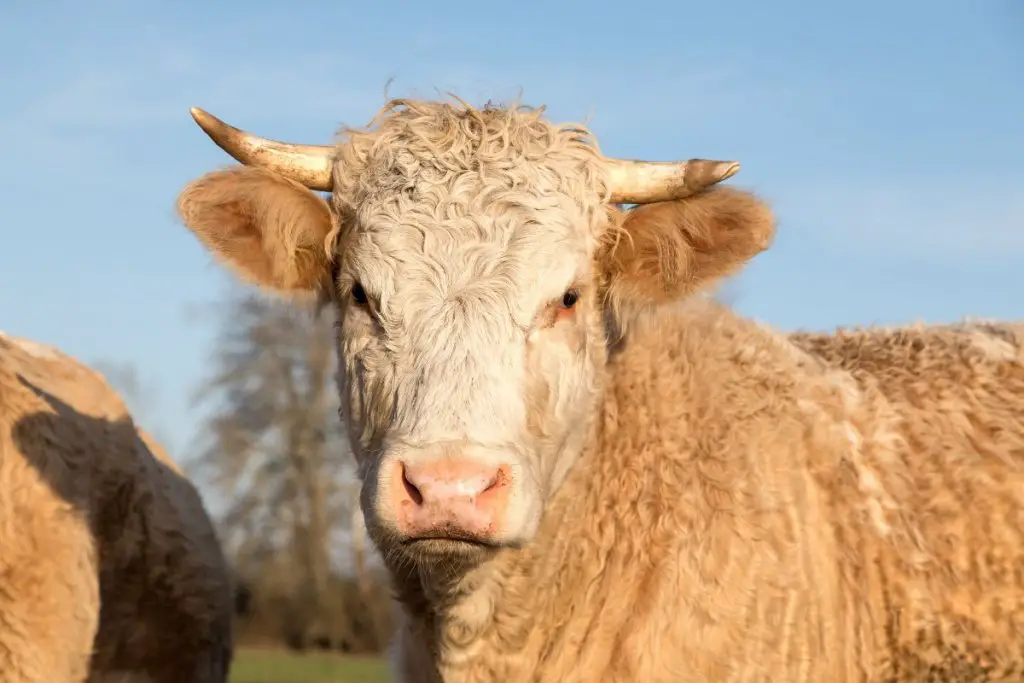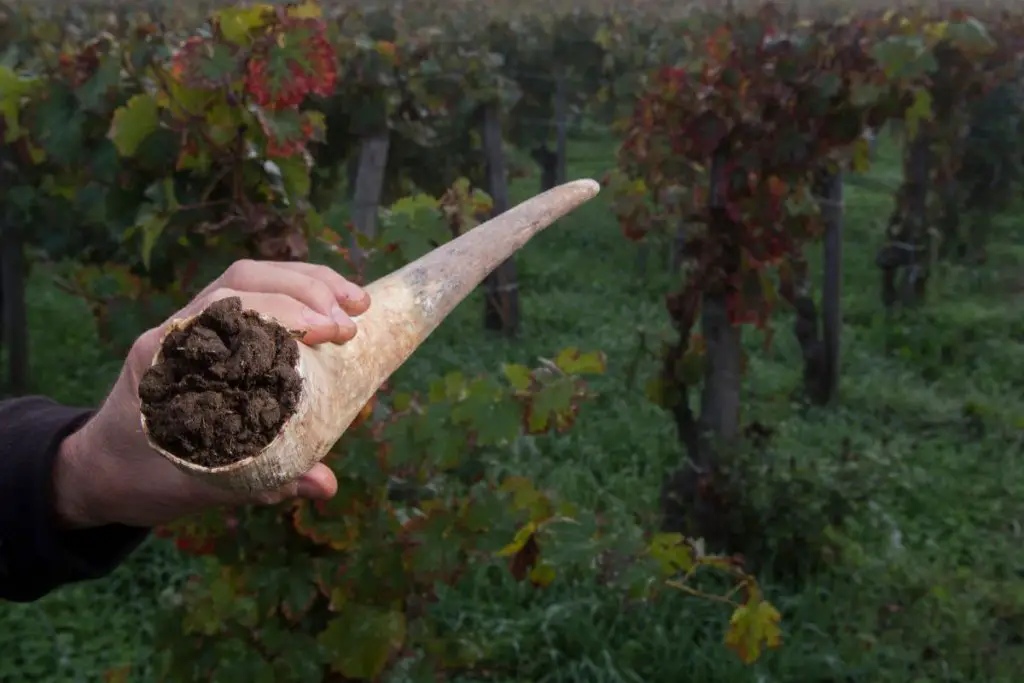All cows naturally have horns, including males and females. However, disbudding, dehorning and selective breeding practices means that most modern cows today don't have horns and are called polled cows. Bulls, on the other hand, are almost always allowed to keep their horns.
Cow horns are one of the greatest fascinations throughout the history of domesticated bovines simply because of their presence, but human intervention has led to the development of hornless cows and, inevitably, a kind of mystery about horns in our bovine friends.
In modern herds, it’s not common to see horned cattle, which usually prompts people to wonder if cows really have horns. It gets even more interesting because most people, especially those who have been to farms largely populated with dairy cows, probably haven’t seen horns on any of the cows.
If you’ve only seen horns on a few cows and none on most of the cows you’ve seen so far, you are right to wonder if cows really have horns and what they use them for. Here’s what you need to know!
Table of Contents
What Are Horns?
A horn is a permanent cranial or head appendage comprising two key components—a live bone core projecting from the skull and a tough protective coat of keratin covering the bone. It also has other proteins besides keratin.
Animal horns have a tapering shape that ends in a point at the tip farthest from the head and no branches anywhere, which makes them different from the antlers seen on animals like deers.
Do Cows Have Horns?
All cows have horns. The name “cows” here is taken to mean all members of cattle of male and female genders, either dairy breeds or beef breeds, and not just the females. The true meaning of the name “cow” is a female bovine that has had at least one calf.
In light of this, it’s right to say that naturally, all cattle have horns. However, because of human intervention, not all cows have horns now.
Because of the horned gene in cattle, cows start developing horns from a young age. They will have horns throughout their lives as young calves, steers, heifers, cows, or adult bulls.

Hornless cows are called polled cows if they lack horns because of selective breeding with polled-gene sires.
Another reason a cow won’t have horns is disbudding or dehorning. Disbudding is done when the calf is less than two months old to prevent the horn bud from attaching to the skull and developing into a horn.
Dehorning, on the other hand, is used to remove the horns on a cow once they have already grown.
Animal welfare organizations have decried the practice of removing a cow’s horns, terming it cruel to the animal and a way of robbing it of its natural beauty, wholesomeness, and sacredness.
What Are Cows With Horns Called?
Cows with horns are called horned cows. The shape and size of the horns depend on the cow’s genetics. For example, Texas Longhorn cattle have overly long horns, but their bodies are smaller and slimmer. A Holstein has a larger body but much shorter horns.
Male and female cattle that naturally have horns include jersey cows, Holstein, White Park, Texas Longhorn, Brown Swiss, Highland cattle, Danish Red, and Brahman.
Do Female Cows Have Horns?
As mentioned earlier, a cow is a female bovine that has borne a calf. Naturally, female cattle have horns, but beef and dairy farmers intervene through disbudding, dehorning, or selective breeding to ensure their girl cows do not have horns.
In a typical farm where all cattle are allowed to grow horns, such as organic cattle raised under the biodynamic agriculture system, it’s difficult to tell a horned bull from a horned cow.
One thing to look at is the size of the horns. Horns are naturally unisex in cattle, but females have smaller horns than males.
Your best bet for telling a horned cow apart from a horned bull is to check for the udder. You can also check the underbelly. A cow’s underbelly will be ‘flat’, while the bull’s will have an external projection of the penis.
What Are Horns For?
You can look at the uses or importance of horns in two ways—what the cow uses them for and what human beings use them for when they get them through dehorning or from slaughtered cows.
How Cows Use Horns
Here’s what cattle use horns for:
- Cooling and thermo-regulation: Cow horns have blood vessels that help with thermal regulation. Cows in warmer climates have longer horns (than cows in colder regions), so they can have more blood flow to dissipate heat.
- Defense: Cows use their horns to defend themselves and their young ones from attacks by predators, non-predatory animals, and even human beings. They also use them to defend their collective territory and individual space.
- Communication: No words will be spoken, of course, but dominant cows in a herd use their horns to pass a discrete message to cows lower in the hierarchy to stand down during a disagreement. The message takes the form of a threatening swoosh of the horns that warns the other cow to back off immediately.
- Show off: Bulls use their horns against each other to impress their girlfriends and win their attention, respect, and submission.
- Self-grooming: An itch or insect bite the cow can’t otherwise reach with her tail or tongue? She’ll use the horns instead.
- Digestion: Proponents of biodynamic agriculture, which supports allowing cattle to grow horns, believe that the horns help with digestion.
- Beauty and pride: Cow horns are beautiful if well-grown. The cow wears them with dignity and will do anything to flaunt them if necessary. They are part of the cow’s individuality.
Human Uses Of Cow Horns
Since the ages, humans have used cows for different applications such as:
- Drinking vessels
- Decorative objects
- Musical instruments
- Source of keratin used as material in making glue, furniture, decorations, and tools.
- Horn buttons
- Representing some deities
- Traditional rituals
- Biodynamic agriculture

Should I Let My Cow Have Horns?
The choice to let your cows grow horns or not rests solely with you. Below are two argumentative bases that may help you decide.
The Case For Keeping Horned Cattle
- Horns make it easier to hold a cow by the head when conducting activities like applying ear tags.
- Cows with horns are generally easier to handle because the horns provide secure and safe points for roping, yolking, or holding the head by the hands.
- Horns help with vital aspects of a cow’s life, such as digestion, cooling, defense, sense of individuality, and self-grooming
- Different cultures have different uses for cow horns. Some uses are sacred and underscore the sacredness of the whole cow.
The Case Against Keeping Horned Cattle
- Cows can use the horns to injure themselves, other cows, or even human beings.
- Horns usually snug on things and get caught in tight spaces like gate bars, cattle guards, and fences, causing the cow discomfort.
- Horns may break and lead to loss of blood and possible infections
- A cow with horns takes up more space, which can raise costs when keeping dairy cattle in barns
- There aren’t many skilled veterinarians able to carry out cosmetic dehorning—a type of cow surgery used to remove cow horns at an advanced age. (Its aim is to remove the horns, not necessarily bring a cosmetic effect.)
- Animal welfare organizations view the removal of horns as cruel if the cow exceeds two months of age. However, it’s okay if the beef cattle and dairy industry breed cattle to propagate the polled gene responsible for producing hornless breeds of cows like Angus, Hereford, Limousin, Charolais, Shorthorn, and Gelbvieh. Another less painful method is the chemical method, where caustic paste permanently damages the horn bud. Whichever way, horn removal is time-consuming and incurs costs.
- Some horn removal methods like burning the horn bud with a hot iron rod may not be 100% effective, leading to infections or abnormal horn growths if not all the horn cells are killed.
- Polled animals are less likely to cause damage to farm property than horned cattle.
- Horned cattle may have damaged carcasses and skins because of self-injury
- Horned cows fetch lower prices at cattle auctions because most beef and dairy farmers want hornless cows that are easier to raise
- Horned cattle may require unique or differentiated feeding equipment, especially if the horns are too long.
